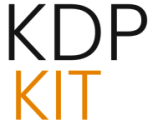Self-Publishing in : A Comprehensive Guide to Taking Control of Your Book
Remember that dusty old typewriter you found in the attic, the one that whispered tales of literary stardom? Yeah, forget that. These days, the road to becoming a bestselling author doesn’t have to wind through the labyrinthine halls of traditional publishing. Thanks to the ever-evolving world of self-publishing, you hold the reins to your literary destiny. That’s right, from the first stroke of the keyboard to the sweet scent of a freshly printed book (or the satisfying ping of an e-reader notification), you’re the boss.
So, buckle up, aspiring wordsmiths! This here guide is your treasure map to navigating the wild, wonderful world of self-publishing. We’re talking insider tips, tricks, and strategies to help you unleash your inner publishing mogul. Get ready to transform your manuscript from a diamond in the rough to a gleaming literary masterpiece ready to captivate readers worldwide.
Market Research: Write a Book Readers Crave
Let’s be real, even Shakespeare had to appeal to his audience (although, let’s be honest, the dude would probably still be a hit today). The point is, knowing what readers want is just as important as crafting a killer story. Think of it like this: even the most amazing, five-star, Michelin-worthy meal won’t satisfy if your diners are craving pizza.
So, how do you become the literary equivalent of the hottest pizza joint in town? It’s all about market research, my friend:
Identify Your Genre
First things first, what kind of story are you serving up? Mystery? Romance? Sci-fi that’ll make heads spin? Genre is kinda like your restaurant’s theme—it sets the vibe, the expectations, and even the language you use. Once you’ve nailed down your genre, you can start speaking directly to the cravings of your target audience.
Explore Online Communities
The internet: it’s not just for cat videos and questionable life choices. It’s also a goldmine for understanding your potential readers. Dive into the online communities, forums, and message boards dedicated to your genre. What are people raving about? What’s got them throwing their Kindles across the room? This is your chance to become a fly on the wall and get the inside scoop on reader preferences.
Analyze Bestsellers
Ever heard the saying, “Don’t reinvent the wheel?” Well, the same goes for books. Take a peek at the bestsellers in your genre on Amazon, Goodreads, those fancy endcaps at bookstores—you know the ones. What makes these books stand out? Is it the titles that grab you by the eyeballs? The covers that scream “Read me?” The synopses that leave you desperate for more? Figure out what works and see how you can sprinkle that magic into your own masterpiece.
Identify Gaps in the Market
Okay, so you’ve explored the literary landscape, you know what readers are hungry for, but something’s missing. That’s where you come in, my friend. What stories haven’t been told? What perspectives are begging to be explored? Finding your unique niche—that special something that sets your book apart—is like adding a secret ingredient to your literary recipe. It’s what will have readers clamoring for a taste of your unique flavor.
Professional Editing: Polish Your Manuscript to Perfection
Okay, you’ve poured your heart and soul into your manuscript, but let’s be honest, even the most brilliant diamonds need a little polishing before they sparkle. In the world of self-publishing, a polished manuscript is non-negotiable. It’s your ticket to competing with the big leagues and showing readers you mean business.
Self-Edit Thoroughly
Before you unleash your manuscript on the world (or at least, on a professional editor), it’s time to roll up your sleeves and dive into the trenches of self-editing. This means reading your work with a fresh perspective, like you’re judging a chili cook-off and your reputation’s on the line. Is the pacing snappier than a fresh baguette? Is the writing clear as day, or are you leaving readers lost in a fog of confusion? Are you being consistent with character voices, or do they sound like they’re channeling different personalities every other chapter?
Get Feedback from Beta Readers
Alright, you’ve put in the work, self-edited like a boss, but now it’s time to bring in the big guns: beta readers. These are your trusted allies, your literary taste testers, who will provide honest feedback from the perspective of your target audience. Think of them as your own personal focus group, except instead of stale crackers and lukewarm coffee, they get an early peek at your literary masterpiece.
Hire a Professional Editor
You’ve self-edited, you’ve gathered feedback from your beta readers, and now it’s time to call in the professionals. Think of a professional editor as the literary equivalent of a five-star chef. They’ll take your already amazing manuscript and elevate it to a whole new level of deliciousness (or, you know, readability).
Eye-Catching Cover Design: Make a Visual Impact
Let’s face it, we live in a world of instant gratification and swipe-left culture. When it comes to grabbing a reader’s attention, you’ve got about three seconds—the same amount of time it takes to say “Wait, don’t scroll past me!” That’s where a killer book cover comes in. Your cover is your book’s first impression, its chance to make a statement and scream, “Hey, I’m the book of your dreams, come read me!”.
Genre Conventions
Before you go full-on Picasso on your book cover, take a step back and consider the visual language of your genre. Just like every genre has its own set of tropes, they also have visual cues that readers have come to expect.
Thumbnail Visibility
Remember those three seconds we talked about? Yeah, well, make that one second. In the digital age, your book cover is often going to appear as a teeny, tiny thumbnail, fighting for attention amongst a sea of other books. This means your design needs to be clear, eye-catching, and legible even when it’s smaller than a postage stamp.
Title Legibility
Speaking of legibility, let’s talk about your title. Your title should be the star of the show, the Beyoncé of your book cover, if you will. It needs to be big, bold, and impossible to miss, even at thumbnail size.
Spine and Back Cover
Okay, so you’ve nailed the front cover, it’s a masterpiece worthy of the Louvre, but don’t forget about its less glamorous siblings: the spine and the back cover. These often-overlooked design elements are crucial for physical copies, especially if you dream of seeing your book gracing the shelves of a real-life bookstore (ah, the sweet smell of paper and possibility!).
Think of it like this: your front cover is the enticing appetizer, the spine is the elegant plating, and the back cover is where you seal the deal with a killer dessert menu. It’s all about creating a cohesive look that screams, “I’m a professional, well-designed book, baby!”
Free Tools for DIY Cover Design:
Now, you might be thinking, “This all sounds great, but I’m an author, not a graphic designer!” Fear not, my friend, the internet is your oyster when it comes to DIY design tools. Here are a few freebies to get you started:
- Canva: This user-friendly platform is like having a design assistant in your back pocket. With its drag-and-drop interface and a library of templates and stock photos, even the most design-challenged author can create a cover that’s pretty darn impressive.
- Adobe Spark: From the folks who brought you Photoshop (you know, the software that can make you look ten years younger?), Adobe Spark is another great option for creating visually stunning graphics, even if you’re short on time (and design experience).
- GIMP: If you’re feeling adventurous and want to dive into the world of open-source software, GIMP is a powerful image editor that’s completely free to use. It’s got all the bells and whistles of professional design software, but be warned, it’s not for the faint of heart (or the technologically challenged).
Choosing Your Self-Publishing Platform: Distribution is Key
Alright, your manuscript is polished to perfection, your cover is a work of art, now it’s time to unleash your literary baby upon the world. But hold your horses, aspiring Hemingway! Choosing the right self-publishing platform is like choosing the right launchpad for your rocket ship—it can make or break your mission to literary stardom.
Print-on-Demand (POD) Services
Remember the days of ordering a gazillion copies of your book, only to have them gather dust in your basement like unwanted house guests? Yeah, those days are over, my friend. Enter print-on-demand (POD) services, the superheroes of the self-publishing world. These platforms, like the ever-popular KDP (that’s Kindle Direct Publishing, for the uninitiated) and the charmingly named Lulu, print your book only when it’s ordered, eliminating the need for upfront printing costs and saving you from a lifetime supply of fire-starter (unless you’re into that sort of thing).
Direct Sales Through Your Website
Want to be the master of your own literary domain? Look no further than selling directly through your very own website. Platforms like the oh-so-versatile Shopify integrate seamlessly with POD services, giving you the power to control pricing, branding, and basically every aspect of your book’s journey from your digital storefront to the eager hands of your readers.
Retail Distribution
Okay, so you’ve conquered the online world, but what about those brick-and-mortar behemoths, the bookstores that smell of old books and new beginnings? If you’re dreaming of seeing your book nestled amongst the bestsellers, you’ll need a platform that offers retail distribution. IngramSpark and Draft2Digital are your go-to guys for getting your book into the hands (and onto the shelves) of major retailers like Amazon, Barnes & Noble, and even those charming independent bookstores that make the world a better place.
Formatting Your Book: A Professional Look and Feel
You’ve poured your heart and soul into your book, from the first spark of an idea to the final flourish of the last sentence. Now, it’s time to give your masterpiece the professional treatment it deserves. This is where formatting comes in, the often-overlooked but oh-so-crucial step that can make or break your book’s readability (and your readers’ sanity).
Trim Size and Margins
Think of your book’s trim size as its outfit—it needs to fit just right. Too small, and it feels cramped and awkward. Too big, and it’s like trying to read a newspaper on a crowded bus. Choose a standard trim size that aligns with your genre and gives your words room to breathe.
And don’t forget about margins, those silent guardians of readability! Set appropriate margins for your chosen trim size to avoid that dreaded “text-hugging-the-edge-of-the-page” look (you know the one, it’s enough to give any bookworm a headache).
Front Matter
First impressions matter, even in the literary world. Your book’s front matter is like the red carpet entrance to your story, so make it count! Include a half-title page (for that extra touch of elegance), a title page (where your book’s name shines brightly), a copyright page (legalities, gotta love ’em), a dedication (if you’re feeling sentimental), and a table of contents (so readers can navigate your brilliance with ease).
Body Matter
This is where the magic happens, the heart and soul of your book. Format your chapters with consistent headings, page numbers (because nobody wants to get lost in your literary labyrinth), and font styles that are easy on the eyes (we’re going for immersive reading experience, not an eye exam).
Back Matter
You’ve reached the grand finale, the after-party of your book. But before you bid your readers adieu, give them a little something extra in the back matter. Include a bibliography or references (if you’re feeling academic), an author bio (it’s your time to shine!), and an index (if your book is bursting with information that needs to be easily searchable).
ISBN
Every book needs a unique identifier, a literary fingerprint, if you will. That’s where the ISBN comes in, the International Standard Book Number that sets your book apart from all the others. Most self-publishing platforms provide free ISBNs, so you can check that off your list without breaking the bank.







